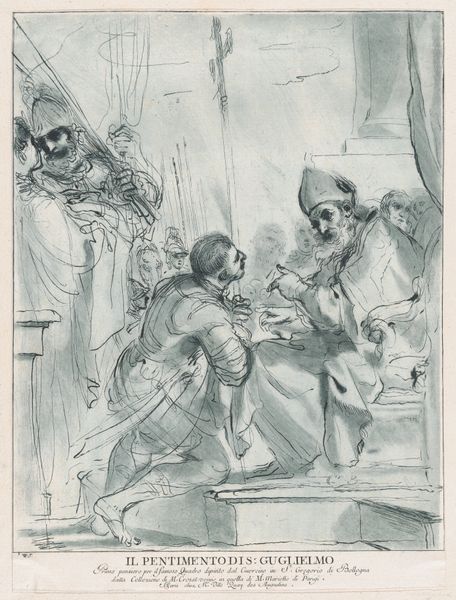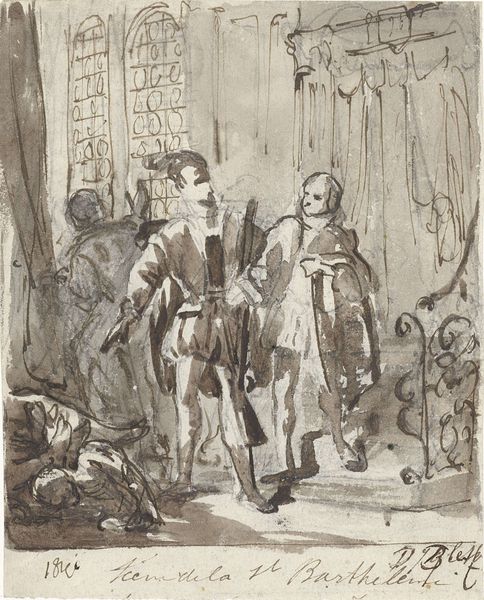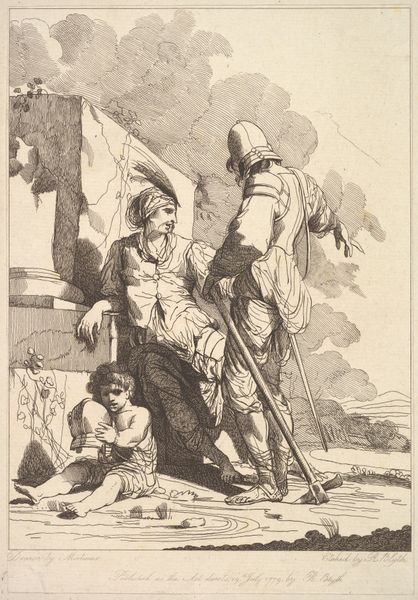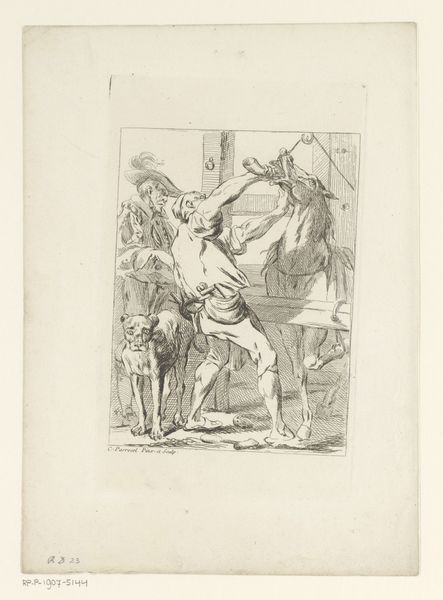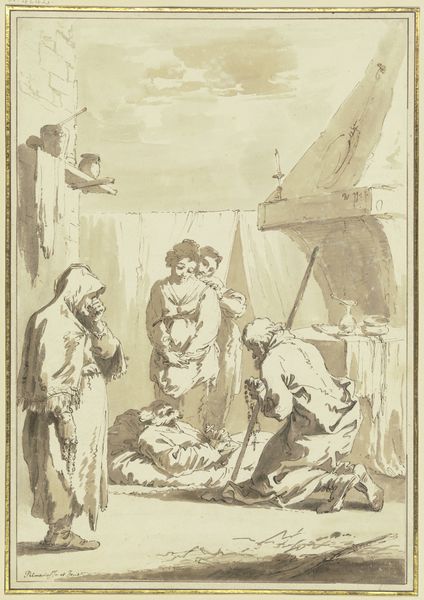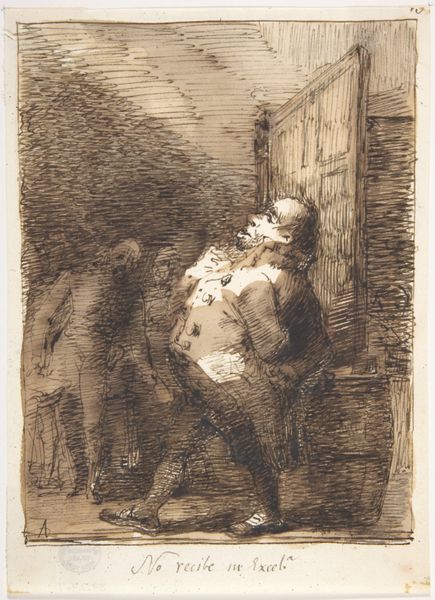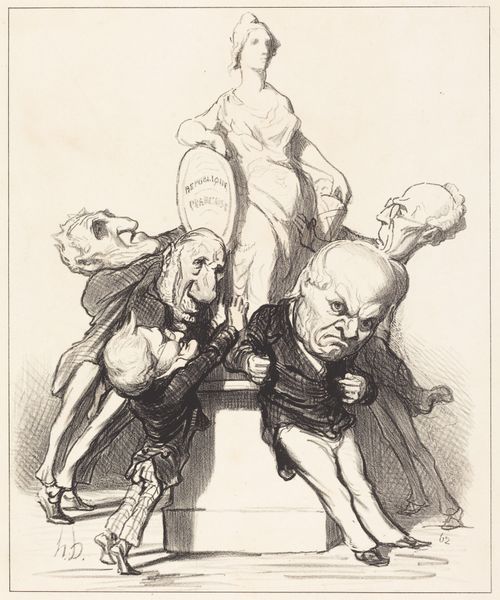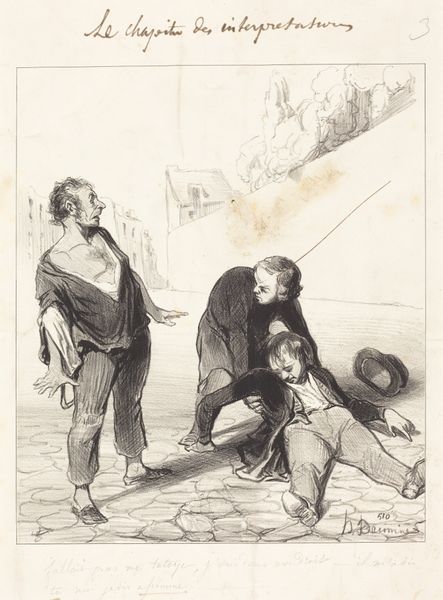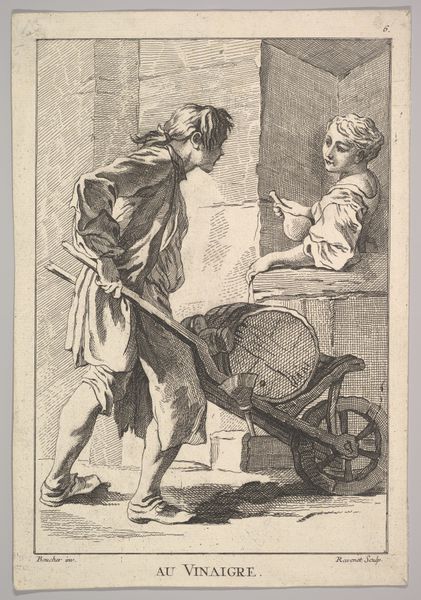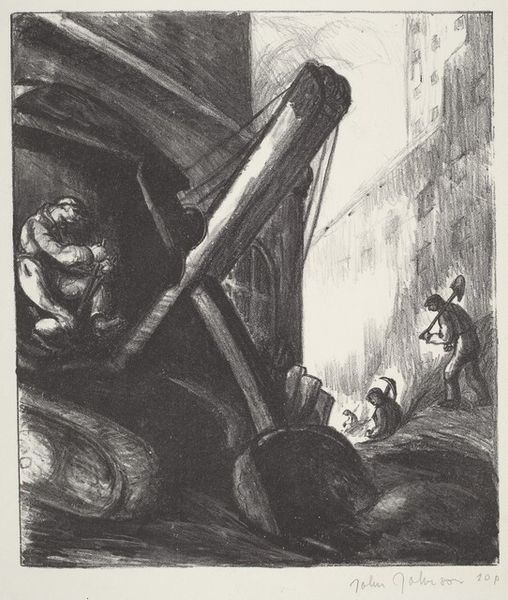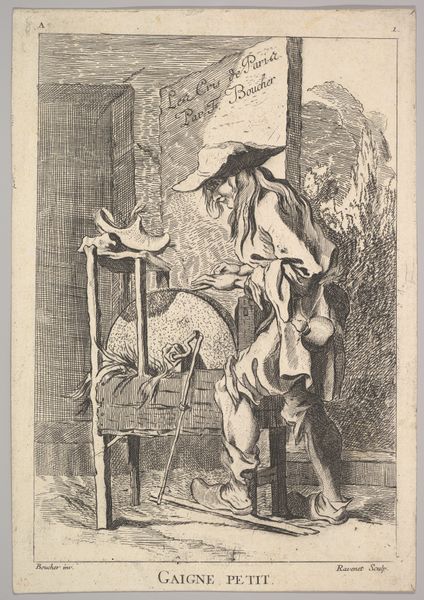
Saint Joseph with the Child Jesus in his Carpentry Shop n.d.
0:00
0:00
drawing, print, paper, ink, chalk
#
drawing
# print
#
figuration
#
paper
#
11_renaissance
#
ink
#
chalk
#
genre-painting
#
history-painting
Dimensions: 254 × 201 mm
Copyright: Public Domain
Editor: Here we have "Saint Joseph with the Child Jesus in his Carpentry Shop" by Pietro della Vecchia. It's rendered in ink and chalk on paper, giving it a sort of immediate, sketch-like feel. I’m struck by how ordinary it makes the scene. What do you see in this piece, considering it’s a religious subject depicted with everyday materials? Curator: It's intriguing to consider the means of production here. Della Vecchia isn't employing costly materials like oils or frescoes, but instead chalk and ink – materials readily available, closely associated with preparatory sketches and the *bottega*. Does this choice democratize the sacred, bringing the divine down to earth through humble, almost disposable materials? The paper itself is crucial; its texture influences the mark-making. Editor: That’s fascinating. It makes me think about the artist’s workshop—his labor and the availability of the materials influencing the final product. Do you think that choice affects the perception of the Holy Family? Curator: Precisely. Consider the social context: was della Vecchia commenting on the role of craftsmanship in Venetian society? The choice to depict labor so explicitly, even within a religious context, underscores a certain value system. We must ask, for whom was this piece intended, and what narratives about work and family are being circulated here? The image emphasizes process - St. Joseph *doing* rather than merely being. Editor: I’ve never thought about religious art in terms of labor like that before! It connects the spiritual and the practical in an unexpected way. Curator: Exactly. This humble portrayal reminds us that religious narratives were often vehicles for conveying social and economic values of their time. The work isn't simply devotional; it’s about the act of *making*. And isn’t that what art itself is fundamentally about? Editor: I learned so much looking at the art from that perspective. I'll definitely keep an eye out for materials and their context. Curator: And consider how the artist's choices, like materials, engage broader narratives about skill, craft and the representation of ordinary life. It's a lens that can transform our understanding of even the most familiar subjects.
Comments
No comments
Be the first to comment and join the conversation on the ultimate creative platform.
